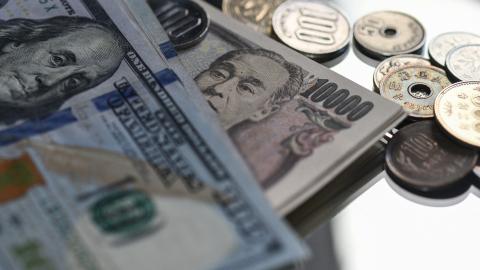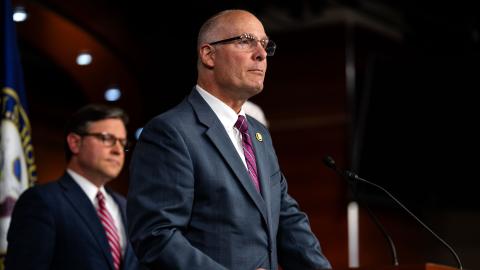There is nowhere else to go. Sounds familiar? The acronym NWETG roundly describes the political economy of the US as its weakest business cycle expansion ever from Great Recession meanders well into its eighth year.
In the giant health sector, Obama care continues to snuff out consumer choice. In the political arena the classic liberal alternative to the status quo is fractured. . And in the financial markets there is the continual drum-beating to accompany the mantra that the Federal Reserve’s “Grand Experiment” leaves investors no alternative to joining the ever more dangerous hunt for yield.
Many individuals fear that institutions supposedly providing for their old age have been following the chase and will fail when the eventual crash occurs. Such anxiety might cause households at some point to build up their precautionary holdings of money including gold. This hypothetical surge in demand for liquidity is very different from the “liquidity trap” which features in Keynesian textbooks. The trap describes how the bond market could kill the central bank stimulus effort. Specifically, If long-term interest rates fall below 2% the demand for money would surge as bonds simply became too risky to hold.
That buyer’s strike has not emerged. Instead what we have seen as long-term interest rates plunge to new lows (negative in Europe and Japan) has been a seller’s strike. Institutional investors around the globe hold on to long-maturity bonds even as yields fall below zero. The wave of profit taking which rational man might expect is nowhere in sight, though it may yet take us all by surprise. If there is to be a buyer’s strike in capital markets the signs are that this will emerge in equities and credit paper, with households not professional investors as the lead actors.
Already many equity investors are veering away from companies making long-run investments which deliver returns most likely after the next crash. The low investment, low-productivity growth, high dividend economy is the result. The often heard term “most unloved bull market” indicates how widespread is the sense of foreboding about the looming end of Fed-induced speculative frenzy. There are many possible “final stage” scenarios most of which include a sudden seizing up of liquidity in the corporate and emerging market bond funds. The elephant in the room is the private equity bubble.
In this climate it would have been understandable if the future Federal Reserve had been a theme in the US election campaign and if market analysts were searching for every hint about a possible assault against the monetary status quo. And indeed some have picked up on Trump’s comments to reporters on his campaign jetliner (September 5) Clinton and Obama have been boasting about a “false economy” where the “Fed is keeping interest rates down so that everything else doesn’t go down”. But few would say such sound bites emit a strong signal of a potential monetary revolution ahead.
In fact there has been similar silence punctuated by the occasional sound bite in previous presidential election campaigns at times of great monetary convulsion (1932, 1976 for example). Perhaps the candidates fear that monetary policy debate can dangerously backfire. The reform candidate might become framed as a harbinger of market crash.
In looking for hints of future monetary shock past election campaigns teach us that it is useful to assess the candidate’s ideological commitment, ability to find a visionary exit from crisis and courage to maintain long-run focus during a cyclical downturn. As illustration, Jimmy Carter in 1976 as a little known conservative Southern Democrat did not signal a monetary message, though in a TV debate with President Gerald Ford he attacked the Fed’s then chairman, Arthur Burns, for “showing a typical erroneous Republican attitude”. Yet two years later as inflation jumped, productivity stagnated and the dollar slumped he sacked Fed Chair Miller and put Paul Volcker in his place with a mandate to wage a monetarist fight against the Greatest Peacetime Inflation albeit at the risk of near-term recession.
By contrast, Ronald Reagan gave way under the pressure of the mid-1980s slowdown to pressure the Fed into supporting a dollar devaluation policy which culminated in global bubbles and bust including the Great Japan Crash. George W. Bush in the 2000 campaign promoted an economic agenda constructed by Larry Lindsay, the ex-Fed governor who had warned against bubble-making and was now a fervent supply-sider. Barely two years later amidst concern about continuing cyclical weakness, Bush fired Lindsey and appointed Bernanke as Fed Governor. Chief Greenspan whose own job was soon up for renewal took the cue to “breathe in inflation”.
In the 2016 campaign, neither Hilary Clinton nor Donald Trump has hinted that they would pressure the Federal Reserve to” normalize monetary conditions”. And indeed it is unclear that such action so late in the asset price inflation disease would make the eventual deadly phase (of recession and crash) milder than otherwise. The moment of monetary choice for the next Administration will be when the crash occurs.
A President Clinton surrounded by her neo-Keynesian court is likely to favour the response of doubling down on the monetary experiment and big fiscal expansion. In the market-place black swan specialists might estimate the likelihood of her instead launching a coup against the Yellen Fed (even less popular than the IRS) and implementing monetary regime change. The same specialists might consider whether a President Trump would defy predictions that he would call upon the Keynesians and devalue the dollar in a crisis. It all depends on temperament and which party controls Congress.














